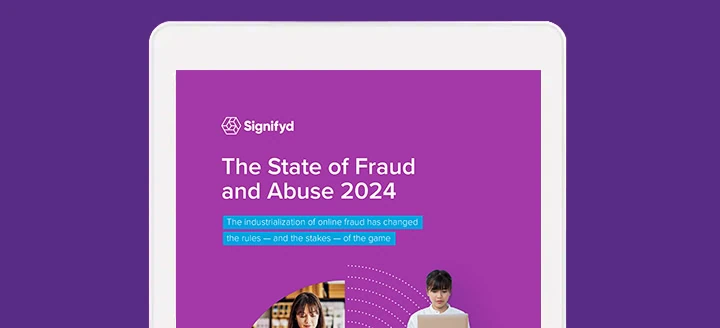The really good news about April’s ecommerce spending is that customers had more available products to buy. The easing of port congestion saw gift-card spending in home goods soar 525% from a year ago, Signifyd’s Ecommerce Pulse data shows.
That new sofa that was sitting in the ocean finally landed in a living room.
April’s overall spending by customers also saw a significant increase in cart size, with the average order value up 180% from the year before. And gift cards are still a favorite purchase, with sales continuing to rise from a year ago, especially in sporting goods (140%) and apparel (72%), according to Signifyd data. Gift-card purchases in apparel were also up 59% from last year.
But along with the good news comes a new warning: That long-forgotten retail store account, the one opened perhaps to get 15% off a purchase, could be living the high life without a customer even knowing it.
Account takeover on the rise, data shows
This lack of memory isn’t lost on scammers. They know that a mature account with a history of legitimate orders is account-takeover gold.
- In April, attempted fraud attacks on aged customer accounts spiked to 352% year over year, with fraud attempts to purchase electronics alone in aged accounts rose 401%.
- Fraud pressure overall rose 46% in April from the year before.
- Gift-spending in home goods soared 525%, signifying an easing of port congestion.
- Average order value in all verticals rose 180% in April from a year ago.
The slow but consistent plod of customers back to brick and mortar stores saw fraudsters change strategy in their account takeover fraud scams.. Their latest nefarious scrabble on keyboards is to revive an online account that a customer may have forgotten about, save for a dusty card sitting in a drawer somewhere.
Attempted attacks on aged accounts spiked 352% in April from the year prior. And fraudulent attempts to buy electronic products from aged accounts saw a 401% increase, Signifyd data shows. Not that online active accounts were left out. Fraud pressure, an indicator by Signifyd of orders presumed to be fraudulent, rose 46% overall in April, significantly down from March, but still ahead of the year before.
To Signifyd, it’s no surprise that attempted attacks on mature accounts increased along with gift-card growth. When infiltrating an account, scammers often have full access to stored credit card numbers, gift cards and credits from returned purchases. They can make and manipulate purchases with the unused credit and stored gift card numbers before a customer is the wiser.
Gift cards present a rich target for account takeover fraudsters
Just looking at the numbers in the sporting goods vertical for April elucidates this behavior. Along with the 140% spike in gift-card sales came a 60% increase in fraud pressure on mature accounts, Signifyd data shows.
Consumer advocate Clark Howard says fraudsters are always on the lookout for weaknesses in personal behaviors or corporate systems, and then change tactics accordingly. “It’ll keep morphing,” he told Lifehacker.com.
Meanwhile, merchants have also been successful in changing and implementing new methods to encourage sales. Sales in the health, beauty and cosmetics vertical using the buy now, pay later program grew 93% in April from the year before. Cart size saw a 4% increase in average order value and omnichannel growth overall rose 135% from a year ago.
In apparel, purchasing options and online display changes continue to help sales increase, with growth up 12% in April from last year. Merchants are finally recognizing that most female buyers are neither 5 foot 7 inches tall nor do they have a dress size of zero, and may want to know what material a garment is made from – is it 100% polyester? Is it cotton? Photos of more realistic-size models and a more extensive description of the content of product material have helped online shoppers feel more comfortable about making a purchase.
The potential and problems with buy now, pay later
Still, merchants need help from companies like Signifyd to stop fraud and abuse. The buy now, pay later program can be a big boost for sales, but the lure of paying a fraction of the price upfront can be exploited by customers as well as hackers. Claims by customers in April that a package of health, beauty and cosmetic items was significantly damaged or not as described chargeback rose io 34% over last year. And in home goods, customer abuse rose 122% from a year ago. When these claims are false, they are generally attempts to receive an underserved refund or get an item for free.
Whether it’s a real complaint or a customer scam is a difficult line for a merchant to walk. But Signifyd solves this for its customers by monitoring transaction intelligence and consumer behavior over time. This builds insights into the identity and intent behind each order within its network and allows it to detect anomalies in shoppers’ orders.
Signifyd Data Analyst Phelim Killough contributed to this report.
Looking to stamp out account takeover? We can help.












